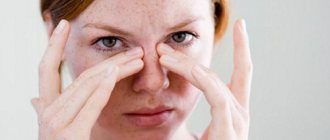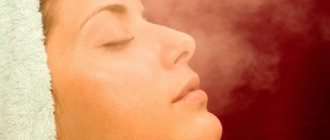There is an opinion that a Russian bathhouse is a healer of all ailments. Indeed, there are known cases of rapid recovery from various colds after visiting a bathhouse. But does a bath help with bronchitis? Let's consider all the pros and cons.
The healing properties of the bath
The respiratory system often suffers from viral attack due to hypothermia, contact with sick people and for other reasons. The bathhouse is an excellent remedy that strengthens our body, restores its protective functions, by helping to remove toxins and waste through sweat.
This method also allows you to significantly moisturize and warm the mucous membranes of the upper respiratory tract.
In its properties, it resembles warming compresses for bronchitis - such a useful bathhouse, people go to the bathhouse to relax, and this can be explained from a physiological point of view. With the release of sweat, excess lactic acid also comes out of the muscles, which gives us a feeling of fatigue.
It turns out that you can and should take a steam bath for bronchitis! But don't rush to conclusions.
If bronchitis “lingers on”
Both adults and children are familiar with bronchitis firsthand. The pathology is so common that, in most cases, it does not attract much attention. And most often it does not pose a serious threat. However, the disease may drag on or appear excessively often. Being a sign of significant violations and, at the same time, the basis for future complications.
Protective "reserve"
The bronchi, as well as the respiratory system as a whole, are in direct contact with the surrounding air, continuously protecting themselves from the aggression of the abrasive and toxic elements of the latter.
Among the protective “bronchial” mechanisms:
- mucus covering the inner surface of the bronchi and mechanically “precipitating” foreign elements;
- the movement of specialized cilia that propel mucous secretions along with foreign impurities back into the oral cavity;
- a powerful muscle layer, the contraction of which narrows the diameter of the bronchi, thereby reducing the further intake of irritants and increasing air pressure during exhalation (one of the cough mechanisms);
- local immunity factors (IgA, macrophages and others)
- and the rate of renewal of bronchial epithelial cells (on average 2-3 weeks).
At the same time, aggression of any origin (smoking, bacteria, viruses, etc.) stimulates the strengthening of each of the listed factors. And, in the end:
- mucus production increases and it becomes more sticky (to more effectively “glue” irritants together),
- eyelashes “work” more actively,
- the bronchi narrow (which is manifested by wheezing)
- and a cough appears,
- and immune cells begin to secrete aggressive enzymes that literally “corrode” all protein formations.
Normally, such transformations are quite enough to quickly and effectively cope with the irritant. However, in some cases, protective mechanisms are still exhausted.
Breakdown of defense mechanisms
One of the main factors in the chronicity of bronchitis is regular damage to bronchial cells.
This situation is more often associated with smoking or inhaling dust in hazardous industries, but it can also be a consequence of immune pathologies, as a result of which inflammation is not completely controlled and “background” persists in a sluggish form.
As a result, the cells of the bronchial mucosa simply do not have time to recover after damage:
- there are fewer and fewer cilia (since, in fact, these are special “protrusions” on the surface of the same epithelial cells) and their activity decreases;
- mucus accumulates in the lumen of the bronchi, becoming a breeding ground for bacteria;
- constantly narrowed bronchi maintain difficulty breathing,
- damaged mucous membrane “exposes” cough receptors, which is accompanied by constant tickling and coughing,
- and immune forces (especially phagocytosis) significantly lose their effectiveness.
Without treatment, this pathology can be complicated by the addition of aggressive bacterial flora and “descend” into the lungs, provoking the development of inflammation.
And for smokers and employees of “dust industries” it ends in the “formation” of chronic obstructive disease and respiratory failure.
If the immune system is powerless
Frequent and prolonged bronchitis in children is most often associated with immune pathology. And the cause of such disorders can be both congenital disorders and response characteristics, as well as “banal” deficiency of a number of vitamins and microelements.
We are talking primarily about vitamin D, iron, zinc and copper, as well as antioxidants - selenium, vitamins C and E, which have a stimulating effect on the immune system.
A decrease in the production of leukocytes and a violation of their separation “according to orders” can be triggered by a deficiency of vitamin B9 (folic acid).
In adults, in addition to the listed factors, weakened immunity is associated with a lack of thyroid hormones (free T4 and T3) and “problems” with the liver. In children, this nature of immune damage is still quite rare.
In any case, frequent bronchitis, both in children and adults, requires consultation with an immunologist, monitoring and correction of the immune status.
And among other things, we should not forget about the sources of chronic infection in the nasopharynx and oropharynx (tonsillitis, sinusitis and others).
The latter regularly “throw” bacteria into weakened bronchi. You can assess the quality and quantity of pathogenic flora and select effective drugs for them using a swab from the throat and nose for culture.
By the way, the infectious nature of prolonged bronchitis can also be associated with the “cunning” intracellular flora - mycoplasmas and chlamydophila pneumoniae, the presence of which is often only indicated by a prolonged cough.
The activity of such pathogens is observed precisely in cases of weakened immunity, and their detection is only possible by analyzing a smear from the throat (or sputum, if separated) using the PCR method.
And of course, bronchitis is a faithful companion to most seasonal ARVIs. True, respiratory viral infections themselves “do not tend” to provoke chronic inflammation, but only significantly weaken the bronchial mucosa. Therefore, if after ARVI “residual effects” last more than 2 weeks, you should still look for the cause in bacteria and immunity disorders.
Bathhouse for bronchitis
Is it possible to go to the bathhouse if the bronchial mucosa is inflamed, if it is so useful? To find out whether it is possible to go to the bathhouse if you have bronchitis, you need to figure out what happens in the human body when visiting the steam room.
When bronchitis develops, the first symptom is a cough. It can be dry and wet. A dry cough is dangerous because there is no way out for pathogenic organisms, so medication to liquefy the sputum is required. A wet cough indicates that the disease is progressing well and the person will soon recover. For dry and wet coughs, it is recommended to use compresses with a warming effect. A bath for bronchitis also has a warming effect.
Processes that occur in the human body under the influence of heat in the bath:
- thermal effects promote dilation of the bronchi;
- if you go to the bathhouse with bronchitis, there is a decrease in the tone of the muscles of the respiratory tract and skeleton;
- breathing is normalized, gas exchange in the alveoli becomes better;
- moist warm air helps speed up metabolism, release large amounts of sweat and remove toxins from pathological microorganisms that cause bronchitis.
- The mucous membrane of the bronchi is moistened; this is the best time to remove phlegm from the body.
What happens in the body during ARVI
Fever, runny nose, cough are signs that pathogenic microbes have entered the body. “Elevated body temperature means that microorganisms that cause respiratory diseases have entered the blood and began to circulate throughout the body, choosing where to settle,” comments Natalya Polenova. — A rise in body temperature leads to increased heart rate and respiratory movements, and loss of fluid from the surface of the body and mucous membranes. Symptoms of intoxication develop, which any additional load only aggravates. We are no longer talking about any muscle growth, an anabolic process (which requires additional energy): the body devotes all its strength to fighting the infection.”
But despite this, some fitness fans still strive to train in this state.
Visiting the bathhouse if you have bronchitis is not allowed
It would seem that bronchitis and a bath are incompatible concepts. Indeed, in some cases you cannot go to the bathhouse if there is an inflammatory process in the bronchial mucosa. Let's consider when the answer to the question of whether it is possible to steam and bathe in a bathhouse with bronchitis is negative.
- During the acute period of pathology development. When there is a dry cough and the patient takes medications to produce sputum and remove it, the thermal effects of the bath can only aggravate the situation.
- You cannot visit steam rooms at elevated temperatures; it must be within normal limits. If there is no temperature, the bath is not contraindicated.
- The patient will feel unwell in the bath with allergic obstruction, when bronchial hyperreactivity is increased. And saunas and baths are irritating to the bronchial mucosa. Also, if you are allergic to the components of herbal remedies used in the bathhouse, you should not visit it.
- If you have cancer, you should not go to the bathhouse.
- With the development of tuberculosis.
- People only steam when their pulse is up to 90 beats/min, and their blood pressure is not higher than 140/90.
- It is not allowed to go to the sauna and bathhouse if the patient still has shortness of breath when exhaling. This symptom indicates the development of obstruction.
- In case of severe vascular diseases, kidney or liver pathologies, you should not visit steam rooms.
When can you return to training after a cold?
It will take some time. “You can return to intense training no earlier than 14 days after your body temperature has returned to normal,” the medical officer adds.
Trainers recommend returning to fitness after your doctor allows it. It is worth entering the training mode smoothly. “Give priority to activities that restore body mobility; it will be good to roll all the muscles and ligaments on rollers. Why? Due to decreased activity, the chemical processes in the muscles slow down and we lose our freedom of movement. She needs to be returned,” explains the fitness trainer.
The next step should be low intensity cardio training. “It will allow the work of the cardiovascular system to return to the right direction. But watch your heart rate: the pulse should not exceed 140 beats/min for young people and 110 beats/min for older people. You must move easily."
After this, you can return to training at your usual intensity. “It’s best to contact an instructor who can select a lesson based on your condition and monitor it,” sums up the fitness trainer.
As you can see, even with minor symptoms of ARVI, experts advise skipping training and allowing the body to recover.
Choice: sauna or steam bath
Is it possible to wash while visiting a bathhouse and a sauna, and are they significantly different?
A sauna differs from a bathhouse in that a person is exposed to dry air, whereas in a bathhouse there is constantly wet steam. If you have bronchitis, you can go to a bathhouse to separate mucus and remove it better due to the effect of steam on the mucous membranes of the respiratory organs.
The sauna is worse in terms of sputum separation. There, a person is exposed to dry air, which is not as conducive to the release of microbes with sputum as steam in a bathhouse. Visiting the sauna with bronchitis is recommended after all the symptoms of the disease have practically ceased to appear; there will only be residual effects. To prevent dry air from irritating the mucous membranes, it is recommended to drink herbal decoctions or mineral water after visiting the sauna.
To consolidate the therapeutic effect, you can brew tea from herbs and plants such as rose hips, chamomile, sage, St. John's wort, and thyme. You can boil a whole collection of herbs, or you can brew tea from a separate component.
Can I go for a light workout?
Unfortunately no. “When ARVI and influenza manifest themselves, any training is prohibited. Even stretching, yoga or roller flexing can backfire. Wait until you have fully recovered and your doctor gives you permission to start training. Take care of your health, it is priceless,” warns an employee of one of the medical centers.
Do you feel like you're getting sick? Give up sports. “If you begin to experience symptoms of illness, I would advise you to refrain from any physical activity and devote your free time to a walk in the park or recreational activities,” says the group training leader. — Don’t worry, most of the indicators will remain at the same level for a certain amount of time. Muscles lose their strength after 2 weeks of lack of targeted training, endurance decreases after 3 days, but it will not be difficult to restore the level already achieved. And with a balanced diet and a healthy regimen, your figure will practically not suffer due to a temporary decrease or lack of exercise.”
Focus on restoring your health: rest, drink plenty of warm fluids, ventilate the room more often, follow your doctor's recommendations. You’ll get back to fitness later.
It is very important to eat a balanced diet for faster recovery. “To fight infection, it is necessary to build immunity, antibodies, and therefore eat protein. It is clear that during intoxication, appetite is reduced, and volitional efforts will have to be made. Let me remind you that protein is not only fried steak, but also yogurt, cottage cheese, omelet, and just egg white. Any of these products, in combination with competent drug treatment, sufficient water consumption and a gentle regimen, will help quickly defeat the disease,” notes Natalya Polenova.
Rules for visiting steam rooms for bronchitis
For children, it is recommended that they get used to the atmosphere of a bathhouse or sauna separately. It is necessary to start with a comfortable ambient temperature in the steam room, then gradually increase it. There are certain nuances that can make a trip to the bathhouse more productive and enjoyable.
- Drink tea. Half an hour before going to the bathhouse, you need to drink herbal tea. This is necessary to prepare the body for the release of waste and toxins. The child should be given tea from those components to which he is not allergic. The best herbs for decoctions are chamomile, marshmallow root, coltsfoot, thyme, St. John's wort.
- While visiting the bathhouse, adding eucalyptus essential oil will help relieve fatigue.
- Beginners are allowed to stay in the steam room for up to 15 minutes.
- In order not to burden the body after the bath, you need to dress warmly, then gradually remove excess clothing.
- Before visiting the bathhouse, you need to take a fasting day the day before and drink more fluids so that as many toxins as possible come out through sweat and the phlegm is better cleared.
- It is better to go to the bathhouse and sauna immediately after bronchitis in the first half of the day. The mucus has settled in the respiratory tract overnight, and the steam will help remove it.
The treatment procedure should be completed by completely drying the entire body, especially the hair, this is important in winter.
The benefits of bath procedures
The benefits of the bath are beyond doubt. Visiting it brings a lot of pleasure, fills the body with lightness, improves mood, and also allows you to forget about the crazy rhythm of modern life, pressing problems, and have a wonderful rest after everyday work. The bathhouse provides a unique opportunity:
- • strengthen the immune system;
- • harden the body and successfully resist colds and viral diseases;
- • remove toxins, waste;
- • improve the condition of the skin;
- • normalize metabolic processes in the body.
Fans of bath procedures know how to treat a cold when its first signs appear and prevent the development of serious diseases of the respiratory system. The classic method of heat therapy makes it possible to prevent the development of bronchitis after hypothermia. Diagnosis of inflammatory processes in the respiratory system will be kept to a minimum.
Drinking tea with raspberries, honey, linden, lemon, ginger followed by a visit to the steam room will help eliminate a runny nose, improve well-being, and eliminate cold symptoms. In such cases, the question of whether it is possible to take a steam bath when the first signs of a cold appear will always be given a positive answer.
Chronic diseases
Sharp temperature fluctuations, rubbing with snow, dousing with ice water, jumping into a pool or ice hole are strictly prohibited.
Treatment of chronic diseases requires an integrated approach - taking antibiotics and other medications, and a variety of physiotherapeutic procedures. One of these procedures may be a visit to the steam room.
According to urologist, andrologist, urological oncologist Victoria Shaderkina, taking antibiotics for prostatitis in itself is not a contraindication to visiting the sauna. “You should visit the steam room only in the remission stage, this will eliminate the possibility of developing edema,” says the doctor, reminding that sudden temperature fluctuations, wiping with snow, dousing with ice water, jumping into a pool or ice hole are strictly prohibited.
The permissible maximum is to change the water in the shower from warm to slightly cooler 10-15 times within 5 minutes.
Is it possible to go to the steam room, are bath procedures compatible with this disease - only the attending physician can give recommendations to the patient.
In case of a chronic illness without an exacerbation, steaming in a sauna or bathhouse is even useful, but provided that remission has begun at the time of visiting the steam room. You just can’t get too cold and get carried away with contrasting procedures - this can make you even sicker, and all the treatment will go down the drain.
How does bronchitis manifest?
The main symptom of bronchitis is cough. There may also be an increase in temperature, an accompanying runny nose, nasal congestion, pain and sore throat and other symptoms of a common ARVI. Strictly speaking, simple bronchitis is a type of ARVI.
The vast majority of bronchitis is acute (that is, the cough lasts no more than 2–4 weeks). The terms “recurrent” and “chronic” have little application to children; in most cases they only mask the true cause: bronchial asthma, bacterial protracted bronchitis, cystic fibrosis, primary ciliary dyskinesia, interstitial lung diseases, etc.
In most modern English-language sources, acute bronchitis is not distinguished from other “cold” diseases and is described in the context of ARVI, since it is most often caused by the same respiratory viruses (respiratory syncytial virus, rhinovirus, parainfluenza viruses, influenza, etc.). The only difference is in the main localization of the inflammatory process during ARVI: inflammation in the nose and throat - nasopharyngitis, inflammation in the larynx and vocal folds - laryngitis, in the bronchi - bronchitis. The tradition of considering bronchitis as a serious complication of acute respiratory viral infection, requiring great anxiety and mandatory antibiotic therapy, has no more justification than the automatic prescription of antibiotics on the third day of fever.
In what cases does bronchitis in a child require special attention?
If cough and wheezing occur in a child with a serious heart defect or in a premature child under 2 years of age, if life has forced you to “without Google” understand the meaning of the terms “bronchopulmonary dysplasia”, “acute respiratory distress syndrome”, if your child initially has serious lung diseases.
If a child’s intense cough lasts more than 4 weeks, if the child regularly suffers from severe bronchitis, if wheezing in the lungs is a regular companion to his colds, or wheezing occurs regardless of whether the child has ARVI or not, if ordinary colds regularly require justified antibacterial therapy - in all these cases, bronchitis can pose a serious danger and requires increased attention and, most likely, consultation with a pulmonologist.











